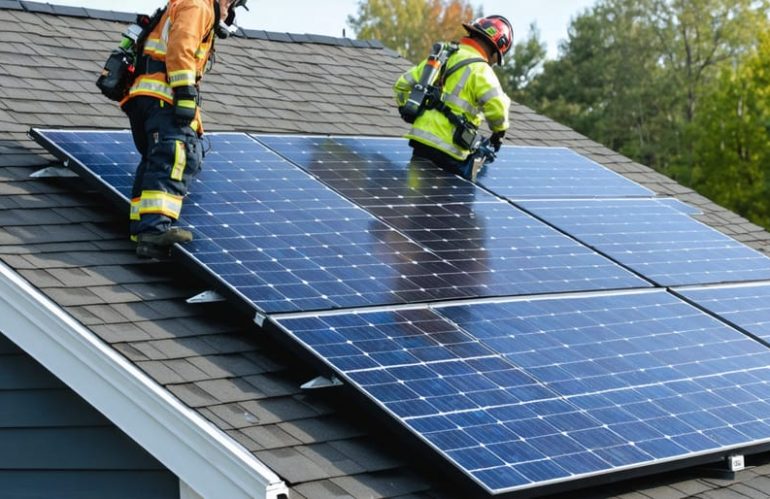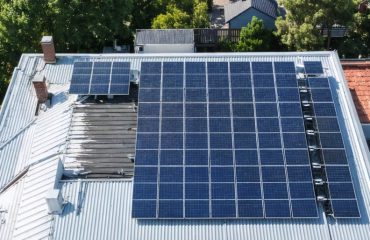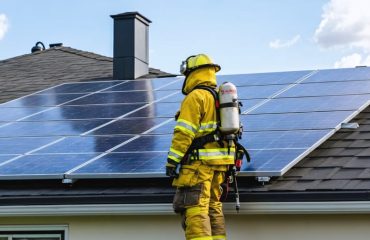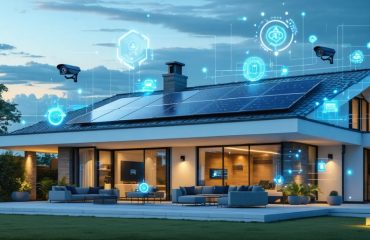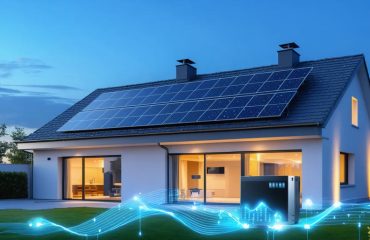Solar power systems present unique challenges for firefighters during emergencies, requiring specialized knowledge and protocols to ensure both responder and homeowner safety. Understanding proper fire safety prevention steps is crucial as residential solar installations become increasingly common. While these systems offer remarkable benefits for sustainable living, their electrical components, roof-mounted panels, and energy storage systems demand specific emergency response procedures. Modern solar installations incorporate advanced safety features, but homeowners and first responders must work together to maintain proper safety protocols. This collaboration ensures swift, effective emergency response while protecting both property and personnel. Recent improvements in solar technology have made these systems safer than ever, yet staying informed about proper emergency procedures remains essential for everyone involved in residential solar power.
How Solar Systems Impact Emergency Response
Electrical Hazards During Emergencies
Solar installations present unique electrical hazards during emergencies that first responders must carefully navigate. Even when the main power is disconnected, solar panels continue generating electricity as long as they’re exposed to light. This means panels and their components can remain energized, creating potential shock risks.
Firefighters face additional challenges because solar arrays can limit access to roofs and create trip hazards in low-visibility conditions. The presence of DC power lines, which run from panels to inverters, requires special handling as they may remain live even when systems appear inactive.
Modern solar installations include rapid shutdown systems that help reduce these risks by quickly de-energizing the system during emergencies. However, older systems may lack these safety features, requiring extra precautions. Understanding these hazards helps emergency responders develop effective strategies while maintaining their safety and protecting property.
Roof Access Considerations
Solar panels on rooftops create unique challenges for firefighters during emergency responses. These installations can reduce available walking space and affect traditional ventilation methods that firefighters use to release heat and smoke from burning buildings. However, modern solar installations include safety features like clear access pathways and designated ventilation zones that help emergency responders work effectively around the panels.
Most current building codes require a clear perimeter around solar arrays, typically 3 feet from the roof’s edge and along both sides of the roof’s ridge. These pathways allow firefighters to move safely and provide space for emergency ventilation if needed. Additionally, many solar installations now include rapid shutdown systems that quickly de-energize panels, making the roof area safer for first responders.
Homeowners can help by ensuring their solar layout diagrams are readily available and maintaining clear markings for emergency access routes on their roofs.
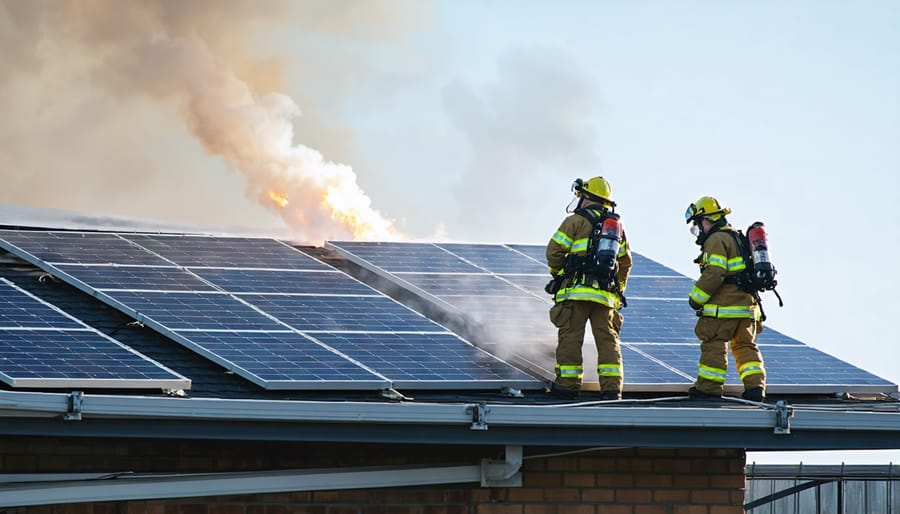
Built-In Safety Features of Modern Solar Systems
Rapid Shutdown Systems
Rapid shutdown systems are among the most important essential security features in modern solar installations, designed to quickly de-energize your solar panels during emergencies. These systems automatically cut power when activated, ensuring firefighters can safely access your roof without risking electrical shock.
Most modern solar installations include rapid shutdown capabilities that comply with National Electrical Code (NEC) requirements. When emergency responders arrive at your home, they can activate the shutdown system using clearly marked switches typically located near your electrical meter or main service panel.
The system works by reducing the voltage in your solar power system to safe levels within seconds. This quick response is crucial for emergency personnel who need immediate access to your roof. For homeowners, having this safety feature provides peace of mind knowing that both their family and emergency responders are protected.
While rapid shutdown systems come standard with most new installations, older systems may need updates to meet current safety standards. Check with your solar installer to ensure your system includes this vital safety feature.
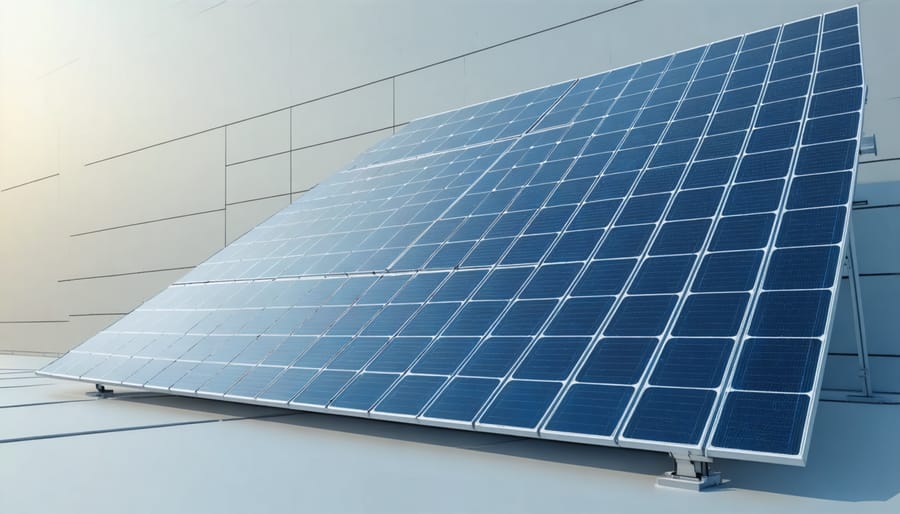
Smart Monitoring Technology
Modern solar installations come equipped with sophisticated monitoring systems that act as an early warning network for potential safety issues. These smart systems continuously track the performance of your solar panels and electrical components, alerting you to any unusual patterns that might indicate a problem. Through user-friendly mobile apps and web interfaces, you can monitor your system’s health in real-time.
Key safety features include rapid shutdown capabilities, which automatically deactivate the system if abnormal voltage or temperature readings are detected. Arc-fault detection identifies potentially dangerous electrical arcs before they can cause fires, while ground-fault monitoring ensures there are no hazardous electrical leaks in the system.
Many monitoring platforms also provide automated alerts to both homeowners and installation companies when something requires attention. This proactive approach means potential issues can be addressed before they become serious safety concerns. Some advanced systems even integrate with smart home technology, allowing for seamless communication with other safety devices like smoke detectors and emergency response systems.
Regular system health reports give you peace of mind while helping maintain optimal performance and safety of your solar investment.
Homeowner Safety Preparations
Emergency Response Plans
Having a well-thought-out emergency response plan is crucial for households with solar power systems. Start by creating a clear diagram of your solar installation, marking the locations of all disconnect switches and maintaining this information in an easily accessible place. Share copies with your local fire department and keep one near your electrical panel.
Establish a step-by-step shutdown procedure that all adult household members can follow. This should include instructions for using the rapid shutdown system, which is a safety feature required by modern electrical codes. Practice these procedures regularly with family members to ensure everyone knows what to do in an emergency.
Keep essential contact information readily available, including your solar installer, maintenance company, and emergency services. Consider creating a laminated emergency card with basic system information and shutdown instructions to keep near your electrical panel.
Regular maintenance checks are part of your emergency preparedness. Schedule annual inspections of safety equipment, especially rapid shutdown systems and disconnect switches. Update your emergency plan whenever modifications are made to your solar system.
Remember to inform your insurance provider about your solar installation and ensure your coverage includes solar-related incidents. This documentation should be part of your emergency response folder, along with warranty information and maintenance records.
System Documentation
Maintaining proper documentation is crucial for both homeowner safety and emergency responder effectiveness. Keep a detailed site map of your solar installation in an easily accessible location, showing the placement of all system components, including panels, inverters, and disconnect switches. This documentation should include clear labeling of emergency shutdown procedures and contact information for your solar installer and utility company.
Create an emergency information packet that includes your system’s specifications, electrical diagrams, and manufacturer guidelines. Store this information both digitally and in a weatherproof physical format near your electrical panel. Make sure to update this documentation whenever modifications are made to your system.
Share copies of your solar system documentation with your local fire department. Many departments maintain databases of properties with solar installations, which helps them respond more effectively during emergencies. Include photographs of your roof layout and access points, marking clear paths for firefighter ventilation operations.
Keep records of all maintenance, inspections, and repairs performed on your system. This history can be valuable for emergency responders and insurance purposes. Consider creating a simple one-page emergency response guide that highlights the most critical safety information and posting it near your electrical panel.
Remember to review and update your documentation annually, ensuring all contact information and system details remain current.
Regular Maintenance and Inspections
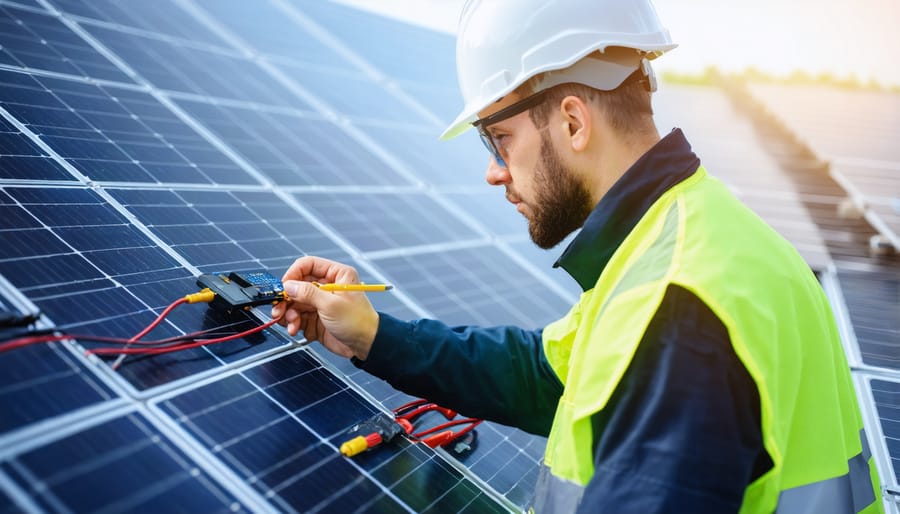
Professional Inspection Schedule
Regular professional inspections are crucial for maintaining your solar power system’s safety and efficiency. Industry experts recommend a comprehensive inspection by a certified solar technician at least once every two years. However, if your area experiences severe weather events or you notice any performance issues, additional inspections may be necessary.
During these professional checks, technicians will evaluate all electrical connections, inspect mounting hardware, test emergency shutdown systems, and ensure all safety labels are visible and legible. They’ll also verify that fire safety access points remain unobstructed and that rapid shutdown systems are functioning correctly.
For newer systems (less than 5 years old), biennial inspections are typically sufficient. Older systems may benefit from annual inspections to catch potential issues early. Many solar installation companies offer maintenance packages that include regular safety inspections, often scheduling them automatically to help you stay on track.
Keep detailed records of all inspections and any maintenance performed, as this documentation can be valuable for emergency responders and insurance purposes.
Warning Signs to Watch For
Being proactive about safety means knowing what signs indicate potential issues with your solar power system. Watch for any visible damage to solar panels, such as cracks, discoloration, or loose mounting hardware. If you notice burn marks, bubbling, or melting on panels or wiring, these could indicate dangerous electrical problems requiring immediate attention.
Pay attention to unusual sounds coming from your inverter, like buzzing or crackling, which might suggest electrical issues. Monitor your system’s performance through its monitoring app or display – sudden drops in power generation could signal problems. Any signs of water damage, such as moisture under panels or water stains on your ceiling, should be addressed promptly.
Check for exposed or damaged wiring, particularly where cables enter your house or connect to the inverter. Loose connections at junction boxes or conduits also warrant professional inspection. If your system frequently trips circuit breakers or you notice flickering lights when the solar system is operating, contact a qualified solar technician immediately.
Keep trees and branches trimmed away from panels and watch for any animal activity that could damage wiring or system components.
Solar power systems represent a remarkable advancement in sustainable energy, offering both environmental benefits and energy independence. While these systems come with specific safety considerations for emergency responders, the industry has developed robust safety protocols and technologies to address these challenges. Through proper installation, clear labeling, and regular maintenance, homeowners can enjoy the advantages of solar power while ensuring the safety of first responders. The key is striking the right balance between embracing clean energy solutions and implementing necessary safety measures. By staying informed and following recommended guidelines, we can continue to expand solar adoption while maintaining the highest standards of emergency preparedness and responder safety.

